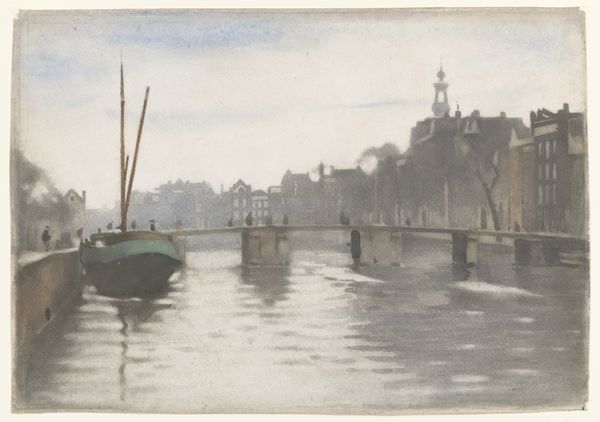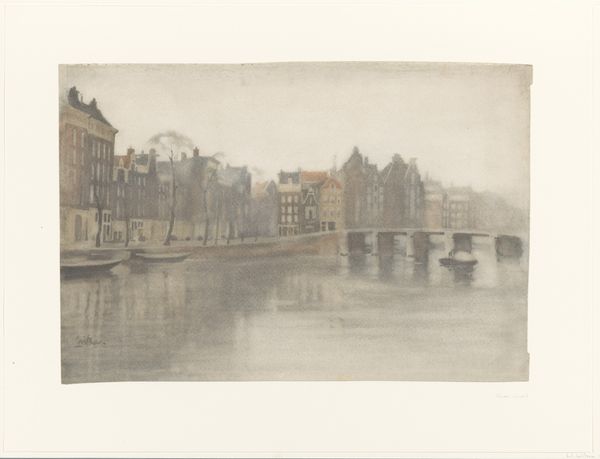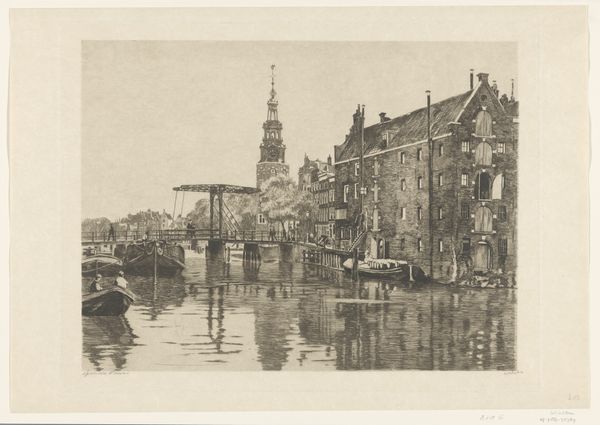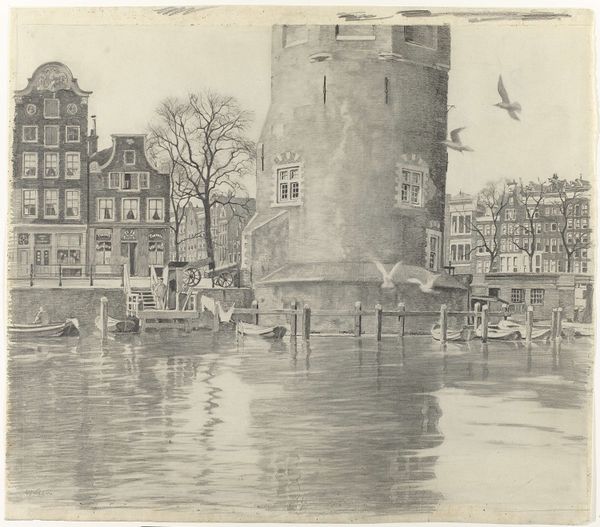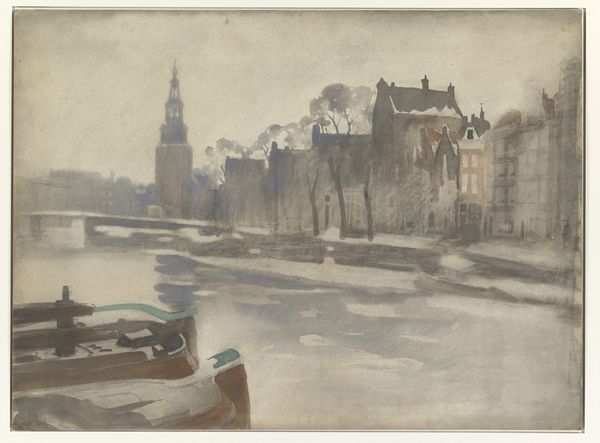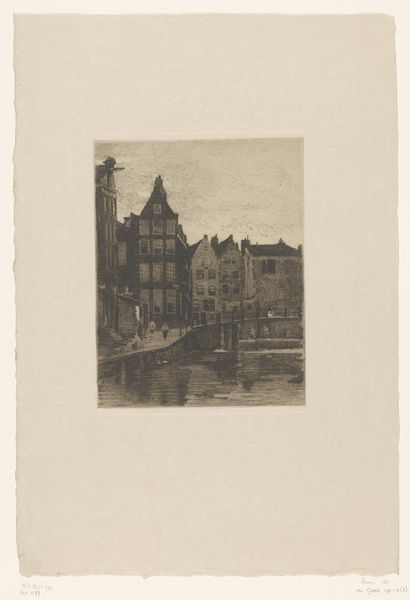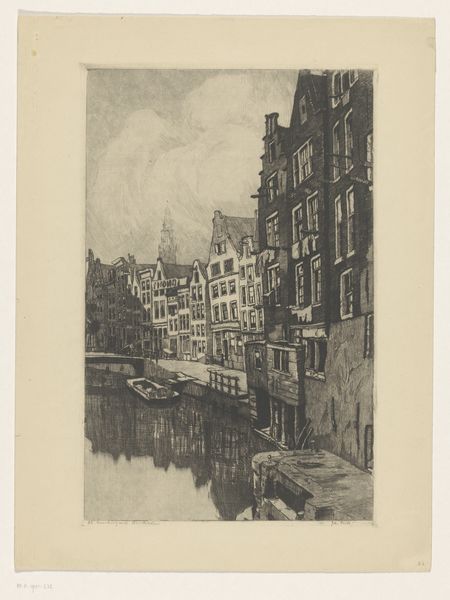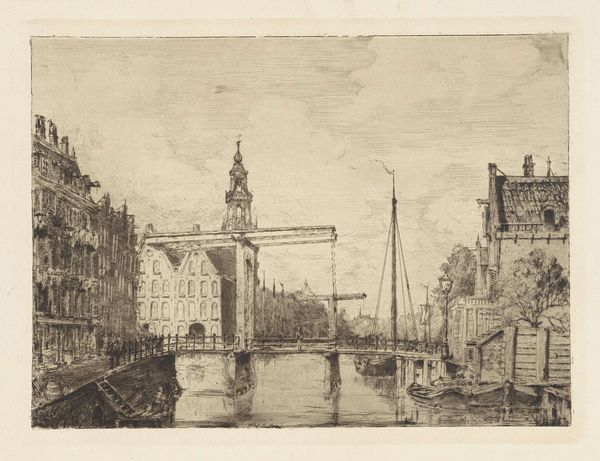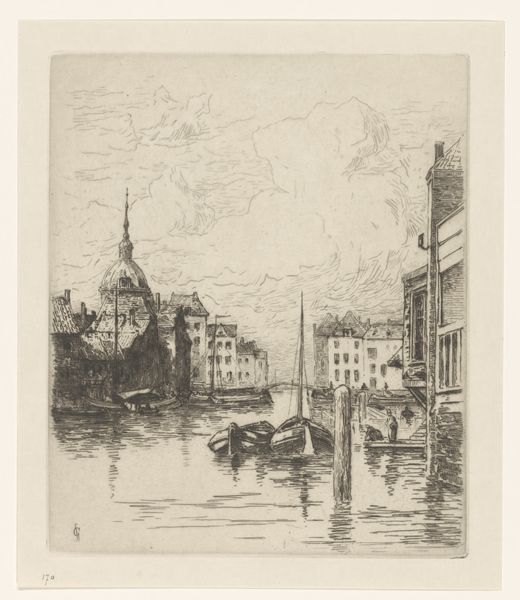
Dimensions: height 357 mm, width 488 mm
Copyright: Rijks Museum: Open Domain
Willem Witsen made this watercolor of Uilenburg in Amsterdam in the late 19th or early 20th century. It captures the city's understated beauty through a tranquil waterscape and sturdy architecture. Witsen belonged to a group of Dutch artists known as the Amsterdam Impressionists, who, drawing inspiration from French painters like Monet and Pissarro, aimed to depict everyday life with an emphasis on atmosphere and light. Their work coincided with a period of rapid urbanization and industrialization in the Netherlands. The rise of cities brought with it new social realities, and artists like Witsen responded by turning their attention to the urban landscape, documenting the changing face of Dutch society. To truly understand a work like this, we can consult period newspapers and census records, as well as architectural surveys, to get a sense of what Uilenburg was like at the time. The art historian pieces together a fuller picture of the social and institutional context that shaped its creation. The image prompts us to think about the public role of art and the social conditions that shape artistic production.
Comments
No comments
Be the first to comment and join the conversation on the ultimate creative platform.
